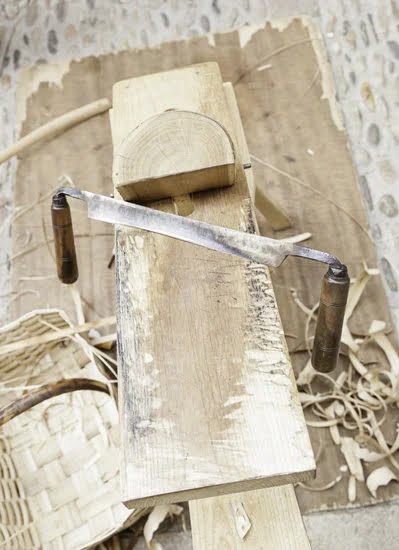Woodworkers are masters of their craft, transforming raw materials into exquisite pieces of art and functionality. But have you ever wondered where these talented individuals source their wood? In this article, we will delve into the fascinating world of woodworking materials and explore the various avenues through which woodworkers obtain their prized materials.
Traditional wood sourcing is a key aspect of woodworking, as it provides a glimpse into the rich history and local heritage of a region. Local sawmills play a vital role in supplying woodworkers with high-quality timber. We will unveil the secrets behind these hidden gems, discovering how they operate and maintain their supply chains to cater to the needs of craftsmen.
However, sustainability is increasingly becoming a focal point for woodworkers. In our exploration, we will shed light on how these skilled artists contribute to environmental conservation through sustainable practices. From selective logging to reforestation initiatives, woodworkers are actively involved in preserving the forests from which they derive their materials.
Additionally, we will unravel the world of specialty wood suppliers and exotic importers. These sources provide woodworkers with unique species that add an element of rarity and distinctiveness to their creations. By uncovering these hidden gems, we gain insight into how woodworkers navigate international markets to find truly exceptional materials.
Woodworking is not limited to new timber alone; salvaged and reclaimed wood also holds a special place in the hearts of many artisans. The artistry lies in giving new life to old timber by repurposing it into stunning works of art or functional furniture pieces. We will explore the techniques employed by woodworkers in breathing new life into salvaged wood and discuss why this practice has gained popularity in recent years.
Join us on this journey as we dive deep into various sources such as urban landscapes, online marketplaces, local forestry networks, personal connections with arborists and tree removal services, and even unconventional ways that resourceful woodworkers obtain their materials. Woodworking is an everlasting quest for quality wood, and understanding where woodworkers get their wood is just the beginning.
Traditional Wood Sourcing
Woodworkers have been sourcing their materials from local sawmills for centuries. These traditional wood sourcing methods not only ensure that woodworkers have access to high-quality and reliable wood, but they also contribute to the support of local economies.
Local sawmills are often family-owned businesses that have been passed down through generations. They play a crucial role in the woodworking industry by providing a steady supply of raw materials. Many woodworkers prefer to source their wood from local sawmills because it allows them to have a closer connection to the source of their materials and supports local businesses.
Sawmills obtain wood logs from various sources, including private landowners, public lands, and sustainable forestry practices. The logs are then brought to the mill where they are processed into lumber or other products. Local sawmills offer a wide variety of wood species, including both domestic and exotic options.
| Sustainable Practices | Benefits |
|---|---|
| Supporting Local Economies | By sourcing wood from local sawmills, woodworkers contribute to the growth and sustainability of local businesses. |
| Quality Assurance | Working directly with sawmills allows woodworkers to inspect the quality of the wood before purchasing it, ensuring they receive high-quality materials. |
| Built-in Relationships | Establishing relationships with local sawmill owners can lead to long-term partnerships and access to exclusive or hard-to-find woods. |
In addition to supporting local economies, traditional wood sourcing from local sawmills offers other benefits for woodworkers. One advantage is quality assurance – by working directly with the sawmill, woodworkers have the opportunity to inspect the wood and ensure its quality before making a purchase. This eliminates any surprises or disappointment that may occur when buying wood from other sources.
Another benefit of sourcing wood from local sawmills is the opportunity to build relationships with the owners. By establishing a rapport with sawmill owners, woodworkers may gain exclusive access to certain woods or receive personalized recommendations based on their project needs. These relationships can be invaluable in the woodworking community and contribute to the sense of community that often exists among craftsmen.
Overall, traditional wood sourcing from local sawmills plays a vital role in the world of woodworking. It supports local economies, provides quality assurance, and fosters relationships between woodworkers and sawmill owners. By unveiling the secrets of local sawmills, woodworkers can continue to rely on these tried-and-true methods for obtaining high-quality materials for their projects.
Sustainable Practices
Woodworkers have long been recognized for their dedication to sustainability and environmental conservation. In this section, we will explore how woodworkers contribute to these efforts and promote responsible practices in the woodworking industry.
Purchasing Certified Sustainable Wood
One of the ways woodworkers contribute to environmental conservation is by purchasing certified sustainable wood. Organizations such as the Forest Stewardship Council (FSC) provide certification for responsibly sourced wood, ensuring that it comes from forests managed with sustainable practices. Many woodworkers prioritize purchasing FSC-certified wood to support responsible forestry and reduce their ecological footprint.
Utilizing Scrap and Offcuts
Woodworkers also actively seek ways to minimize waste in their craft. They utilize scrap pieces and offcuts from larger projects to create smaller items or incorporate them into new designs. By finding creative uses for these leftover materials, woodworkers can significantly reduce their impact on the environment and make the most out of every piece of wood.
Implementing Efficient Production Techniques
Another aspect of sustainable practices in woodworking is the implementation of efficient production techniques. Woodworkers strive to optimize their processes, reducing energy consumption and minimizing material waste. By adopting methods such as precision cutting, utilizing jigs and templates, and planning projects meticulously, they can maximize the utilization of each piece of wood while minimizing scrap.
Promoting Responsible Harvesting Methods
Woodworkers also play a role in promoting responsible harvesting methods within the woodworking industry. They engage in conversations with suppliers and support companies that prioritize sustainable forestry practices. By advocating for responsible logging techniques such as selective harvesting or reforestation initiatives, woodworkers help shape industry standards towards more environmentally conscious approaches.
The dedication of woodworkers to sustainable practices goes beyond just sourcing materials – it extends throughout every aspect of their craft. From choosing FSC-certified wood to implementing efficient production techniques, they ensure that each step of the woodworking process aligns with their commitment to environmental conservation. By promoting responsible practices and actively seeking ways to minimize waste, woodworkers showcase that craftsmanship and sustainability can go hand in hand in the world of woodworking.
Hidden Gems
Woodworkers often seek out specialty wood suppliers and exotic importers for unique and high-quality materials that add a touch of elegance to their projects. These hidden gems offer a wide variety of options beyond the standard wood species found at local sawmills or online marketplaces. Whether it’s rare, highly figured, or ethically sourced wood, these suppliers cater to the needs of discerning craftsmen.
One key benefit of sourcing wood from specialty suppliers and importers is the access to a vast selection of unique and hard-to-find wood species. These suppliers often have an extensive inventory that includes both domestic and international woods, allowing woodworkers to explore different colors, textures, grain patterns, and overall aesthetics for their projects.
From beautifully grained burls to exotic hardwoods like teak or padauk, these hidden gems provide endless possibilities for woodworking enthusiasts looking to create truly one-of-a-kind pieces.
In addition to offering a diverse range of wood species, specialty suppliers and importers usually prioritize sustainable practices in their operations. They often work closely with responsible forestry practices or participate in programs such as The Forest Stewardship Council (FSC) certification which ensures that timber is harvested from well-managed forests. This commitment not only promotes environmental conservation but also provides reassurance for woodworkers who value ethically sourced materials.
When working with specialty suppliers and importers, it is important for woodworkers to do their research. It’s advisable to inquire about the supplier’s sourcing methods, certifications, and sustainability efforts before making any purchase. By choosing trustworthy and reputable establishments, woodworking enthusiasts can support ethical practices while obtaining exceptional materials for their craft.
Overall, specialty wood suppliers and exotic importers are an invaluable resource for woodworkers in search of unique materials. By turning to these hidden gems, craftsmen can elevate their projects with exquisite woods that are not commonly found elsewhere. These suppliers offer the opportunity to create truly remarkable pieces that stand out among the rest, all while promoting sustainability and responsible woodland management.
Salvaged and Reclaimed Wood
Woodworking is not just about creating beautiful pieces from freshly cut timber. Many woodworkers are passionate about giving new life to old, discarded wood through the art of salvaging and reclaiming. This section will explore the importance of salvaged and reclaimed wood in the world of woodworking and the various methods that woodworkers use to acquire these materials.
One of the sources for salvaged and reclaimed wood is construction sites. When old buildings are torn down or renovated, there is often a wealth of high-quality wood that can be salvaged. Woodworkers will work closely with contractors and construction companies to identify any usable timber that can be repurposed for their projects. This way, they not only save money but also give a second life to materials that would have otherwise ended up in landfills.
Another method of acquiring salvaged and reclaimed wood is through barn demolition. In rural areas, many old barns have fallen into disrepair or are no longer in use. These structures are often built using sturdy and high-quality timber that has aged beautifully over time.
Woodworkers who specialize in using reclaimed wood will carefully dismantle these barns, preserving as much of the material as possible. The resulting reclaimed wood can then be used to create stunning pieces with character and history.
To ensure the quality and safety of reclaimed wood, it is important for woodworkers to properly inspect each piece before incorporating it into their projects. This includes checking for any signs of damage or decay, as well as removing any nails or other foreign objects embedded in the wood. Once the reclaimed wood has been prepared, it can be transformed into anything from furniture to home decor items, adding a unique touch to any space.
Urban Wood Markets
With the increasing emphasis on sustainability and eco-friendly practices, woodworkers have started exploring alternative sources of wood to reduce their impact on the environment. One such source is urban wood markets, where they can find an abundance of untapped resources right in the heart of city landscapes.
City Trees: A Hidden Treasure
Cities are home to a vast number of trees that are often overlooked when it comes to sourcing wood for woodworking projects. When trees in urban areas need to be removed due to disease, damage, or construction projects, they are usually chipped into mulch or simply disposed of. However, these discarded trees can be a hidden treasure trove for woodworkers.
The Woodworker’s Process
In order to tap into urban wood markets, woodworkers must establish connections with local arborists and tree removal services who are responsible for managing and removing trees in public spaces or private properties. By building relationships with these professionals, woodworkers can gain access to freshly felled trees that would otherwise go to waste.
Once identified and obtained, the harvested logs need to be brought back to the workshop for processing. The process involves milling the logs into usable lumber by cutting them into boards or slabs. After drying and seasoning the wood properly, it is ready for use in various woodworking projects.
Benefits of Urban Wood Market
Uncovering untapped resources in city landscapes not only provides a sustainable option for sourcing quality wood but also offers numerous benefits. By using locally sourced urban wood, artisans support the local economy and reduce transportation costs associated with importing traditional lumber from distant sawmills or exotic suppliers.
Moreover, utilizing urban tree removals promotes responsible forestry practices as it prevents perfectly good timber from going to waste. It also reduces landfill waste by repurposing trees that would have ended up as mulch or been discarded. Through urban wood markets, woodworkers contribute to the preservation of trees and maintain the beauty and ecological balance of city landscapes.
Online Marketplaces
With advancements in technology and the rise of e-commerce, online marketplaces have become a valuable resource for woodworkers seeking quality materials. These digital platforms offer convenience, variety, and accessibility like never before. Woodworkers can now easily connect with suppliers from around the world and access a wide range of woods to suit their needs.
One of the main advantages of online marketplaces is the vast selection of wood species available. From common domestic hardwoods such as oak and walnut to rare exotic imports like ebony and padauk, these platforms provide access to an extensive catalog of species that may not be readily available locally. Whether a woodworker is looking for specific colors, grain patterns, or unique characteristics, they can find a diverse array of options at their fingertips.
Furthermore, online marketplaces often offer detailed product descriptions and images, allowing woodworkers to make informed decisions about their purchases. They can easily compare prices, sizes, grades, and other specifications to ensure they are getting exactly what they need for their projects. Additionally, many online sellers provide customer reviews and ratings that help guarantee the quality and authenticity of the wood being offered.
Woodworking enthusiasts can also take advantage of the global reach of online marketplaces to source specialty items. These platforms connect buyers with suppliers who specialize in unique woodworking materials such as burls, spalted woods, or reclaimed lumber. This allows woodworkers to add distinctive touches to their projects or create one-of-a-kind pieces that stand out in the market.
Local Forestry Networks
Introduction to Local Forestry Networks
Woodworkers are constantly on the lookout for quality wood materials to bring their projects to life. While local sawmills and specialty suppliers offer a wide range of options, many woodworkers also turn to local forestry networks to forge connections with logging companies and tree services. These networks provide access to a unique source of wood that may not be readily available through traditional outlets.
Collaboration with Logging Companies
One avenue that woodworkers explore is establishing relationships with logging companies in their area. Logging companies are responsible for harvesting trees from forests or private properties, and they often have a surplus of wood that may not fit the requirements of larger industries. By connecting with these companies, woodworkers can obtain unique pieces of timber that would have otherwise gone unused.
Collaboration with logging companies can take different forms. Some woodworkers establish ongoing partnerships, where they receive regular updates on the availability of specific types of wood or even have first pick from freshly cut logs. Others may negotiate the purchase of entire tree trunks, which allows them to control the milling process and ensures they have a consistent supply of high-quality material.
Partnerships with Tree Services
Another avenue within local forestry networks is developing partnerships with tree services. Tree services are typically hired for tree removals, pruning, or maintenance, and they often end up with large quantities of discarded wood as a result of their work. Woodworkers who forge connections with these services can salvage usable timber that would otherwise be considered waste.
Through partnerships with tree services, woodworkers gain access to a variety of interesting species and sizes that may not be found in traditional sources. They can obtain unique pieces such as burls or highly figured wood. Additionally, this type of collaboration contributes to sustainable practices by giving new life to what would otherwise end up in landfills.
By actively seeking out and engaging with local forestry networks, woodworkers can expand their sources of quality wood materials. Whether through collaboration with logging companies or partnerships with tree services, these connections provide a unique avenue for acquiring one-of-a-kind wood pieces and contributing to the sustainable practices that are essential in the world of woodworking.
Personal Connections
Woodworkers often forge personal connections with arborists and tree removal services as a way to obtain high-quality materials for their projects. These collaborations allow woodworkers to acquire unique and interesting pieces of wood that would otherwise go to waste. By partnering with professionals in the tree care industry, woodworkers are not only able to source locally, but also contribute to sustainable practices by giving new life to trees that have been removed for various reasons.
Arborists play a crucial role in the woodworking community as they are responsible for maintaining the health and safety of trees. When a tree needs to be removed due to disease, age or construction needs, arborists often turn to woodworkers instead of discarding the timber.
This collaboration benefits both parties involved. The arborist is able to dispose of the tree responsibly while ensuring it doesn’t go to waste, and the woodworker gains access to high-quality materials that have a unique history.
Similarly, tree removal services contribute significantly to the availability of wood for woodworking projects. These companies specialize in removing trees efficiently and safely. They often work closely with local authorities and homeowners who require their services. Woodworkers can form relationships with these service providers by offering their expertise in evaluating the value and potential use of salvaged timber. In return, they gain access to a variety of wood species that can be transformed into beautiful creations.
Collaborating with arborists and tree removal services is not just about obtaining quality materials for woodworkers; it’s also about creating a sense of community within the woodworking industry. Building relationships based on trust and mutual benefit allows artisans and craftsmen to support one another in their craft while implementing sustainable practices. This personal connection between woodworkers and those involved in tree care ensures that valuable resources are utilized effectively, minimizing waste and contributing positively to environmental conservation efforts.
| Collaborations with Arborists and Tree Removal Services | Benefits |
|---|---|
| Access to unique and interesting pieces of wood that would otherwise go to waste. | Opportunity to contribute to sustainable practices by giving new life to removed trees. |
| Building a sense of community within the woodworking industry by forming relationships based on trust and mutual benefit. | Contributing to environmental conservation efforts through effective utilization of resources. |
Alternative Sources
Woodworkers are always on the lookout for unique and high-quality wood to use in their projects. While traditional sources like local sawmills and specialty wood suppliers are commonly utilized, there are also unconventional ways that woodworkers obtain their materials. These alternative sources provide opportunities for woodworkers to explore new options and push the boundaries of their creativity.
One alternative source that woodworkers often turn to is woodworking shows and exhibitions. These events bring together a wide range of exhibitors, including small-scale mills, individual artisans, and even hobbyists. At these shows, woodworkers can interact directly with suppliers and find unique pieces of wood that may not be easily found elsewhere. Additionally, attending these shows can help woodworkers stay updated on the latest trends and developments in the industry.
Another unconventional way that woodworkers obtain their materials is through community programs or initiatives aimed at sustainable forestry practices. Some organizations or municipalities have programs in place to remove trees from public areas due to disease or development plans. Instead of allowing this wood to go to waste, they make it available to local woodworking enthusiasts. This not only provides a free or low-cost source of materials but also promotes sustainability by repurposing trees that would otherwise be discarded.
Woodworkers also tap into social media platforms as a means of sourcing materials. Online communities dedicated to woodworking allow members to connect with one another and share information about where they source their wood. Some members may have excess inventory they are willing to sell or give away, while others may offer insights into less well-known sources such as abandoned buildings or construction sites.
| Alternative Sources | Description |
|---|---|
| Woodworking Shows and Exhibitions | Events where woodworkers can interact directly with suppliers and find unique pieces of wood. |
| Community Programs and Initiatives | Programs that make wood from public areas available to local woodworking enthusiasts. |
| Social Media Platforms | Online communities where woodworkers can connect, share information, and access unique sources of wood. |
Conclusion
In conclusion, the quest for quality wood in the world of woodworking is an everlasting pursuit. Woodworkers have a deep appreciation for the origins of their materials and strive to source them in a sustainable and responsible manner. From traditional wood sourcing at local sawmills to uncovering hidden gems through specialty wood suppliers and exotic importers, woodworkers are constantly seeking out the best materials for their craft.
One notable trend in woodworking is the use of salvaged and reclaimed wood, which allows artisans to give new life to old timber. This not only adds character and uniqueness to their creations but also promotes environmental conservation by reducing waste. Additionally, urban wood markets have become a valuable resource, as innovative woodworkers discover untapped resources within city landscapes.
With the advent of technology, online marketplaces have become a haven for woodworkers seeking quality materials. These digital platforms connect artisans with suppliers from all over the world, opening up endless possibilities for sourcing unique and exotic woods.
Woodworkers also foster personal connections with arborists and tree removal services, collaborating on projects that involve utilizing felled trees that would otherwise go to waste. These partnerships not only provide access to high-quality wood but also contribute to sustainability efforts by repurposing materials that might have otherwise been discarded.
Finally, alternative sources continue to be explored as woodworkers think outside the box when it comes to obtaining their materials. Whether it’s using unconventional sources such as discarded furniture or repurposing shipping pallets, artisans are constantly finding creative solutions to acquire quality wood.
In the end, the journey of acquiring quality wood is an intrinsic part of woodworking itself. Woodworkers understand that the material they choose will greatly impact the outcome of their creations. With a commitment to sustainability and an unwavering dedication to their craft, these skilled artisans will continue their search for remarkable woods, ensuring that future generations can appreciate both the beauty and functionality of their exquisite creations.
Frequently Asked Questions
Is there money in woodworking?
Woodworking can indeed be a lucrative endeavor and there is definitely money to be made in this industry. However, the amount of money one can earn largely depends on various factors such as skill level, craftsmanship, market demand, and business acumen. Many skilled woodworkers are able to turn their passion into a profitable business by creating custom furniture, cabinetry, or other wooden products.
Additionally, some may choose to sell their creations through online platforms or at local craft fairs and woodworking events. While there is potential for financial success in woodworking, it requires dedication, quality workmanship, and understanding of the market to truly thrive.
Where is the best place to buy wood for DIY?
The best place to buy wood for DIY projects will depend on various factors such as location, budget, and specific wood needs. One option is visiting local lumberyards or home improvement stores that carry a diverse selection of wood species and sizes. This allows individuals to physically inspect the wood before purchasing and get expert advice from staff members who are knowledgeable about the products they offer.
Another option is searching for specialty wood suppliers that focus specifically on catering to hobbyists and DIY enthusiasts. These suppliers often have an extensive range of wood species to choose from along with convenient online ordering options. It’s also worth exploring online marketplaces where individuals can find a wide variety of woods from different sellers across the country or even internationally.
Who owns Woodworkers source?
Woodworkers Source is owned by three partners: Ed Lebetkin Sr., his son Ed Lebetkin Jr., and Craig Stevens III. They started the company as a small family-operated business in 1978 and it has since grown into a respected supplier of hardwood lumber with multiple locations across Arizona and New Mexico in the United States. Woodworkers Source aims to provide high-quality lumber for both professional woodworkers and hobbyists alike.
They pride themselves on offering a vast selection of hardwoods from around the world while also focusing on sustainability by sourcing from responsibly managed forests. The company continues to be family-owned and operated, with the owners actively involved in day-to-day operations to ensure the best customer service and quality products.

Hi everyone! I’m a woodworker and blogger, and this is my woodworking blog. In my blog, I share tips and tricks for woodworkers of all skill levels, as well as project ideas that you can try yourself.





